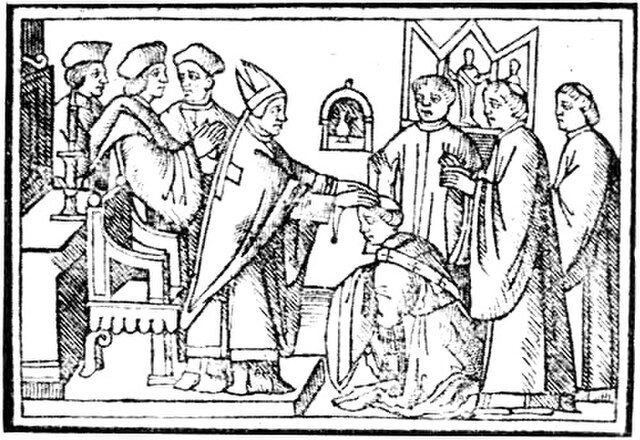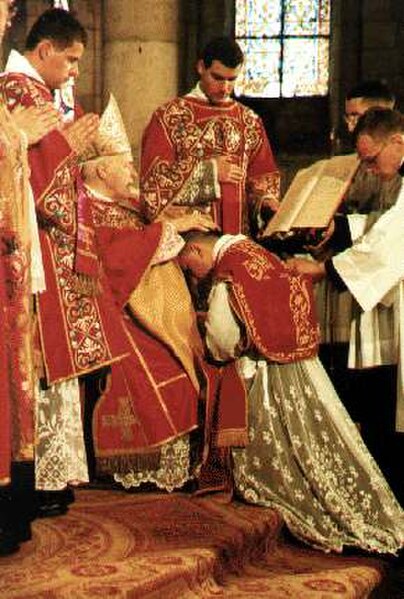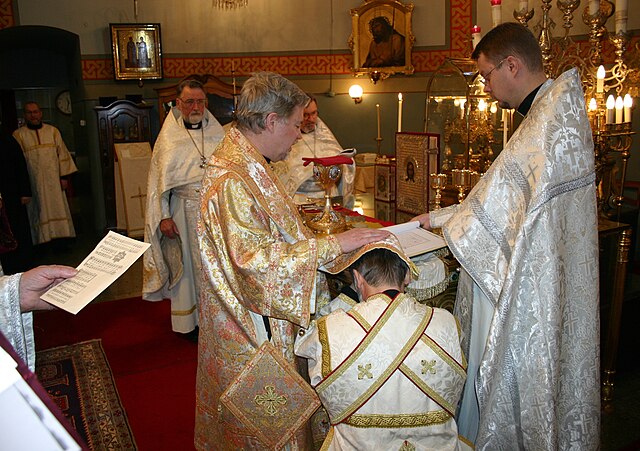In certain Christian denominations, holy orders are the ordained ministries of bishop, priest (presbyter), and deacon, and the sacrament or rite by which candidates are ordained to those orders. Churches recognizing these orders include the Catholic Church, the Eastern Orthodox, Oriental Orthodox, Anglican, Assyrian, Old Catholic, Independent Catholic and some Lutheran churches. Except for Lutherans and some Anglicans, these churches regard ordination as a sacrament.
Ordination of John of Matha
Ordination to the Catholic priesthood in the Latin Church. Devotional card, 1925.
Metropolitan Hilarion (Kapral) performs the laying on of hands (Cheirotonia), conferring the holy order of presbyter (priest) upon an Orthodox deacon.
After the transmutation of the Holy Gifts, the bishop presents to the newly ordained priest a portion of the Lamb (i.e., the Body of Christ).
Ordination is the process by which individuals are consecrated, that is, set apart and elevated from the laity class to the clergy, who are thus then authorized to perform various religious rites and ceremonies. The process and ceremonies of ordination vary by religion and denomination. One who is in preparation for, or who is undergoing the process of ordination is sometimes called an ordinand. The liturgy used at an ordination is commonly found in a book known as an Ordinal which provides the ordo for celebrations.
Ordination of a Catholic deacon, 1520 AD: the bishop bestows vestments.
Ordination of a Catholic priest (pre-1968 form of the Roman Rite).
Ordination of an Orthodox. The deacon being ordained is kneeling with the bishop's omophorion over his head as the bishop blesses him immediately before the Cheirotonia.
Eastern Orthodox subdeacon being ordained to the diaconate. The bishop has placed his omophorion and right hand on the candidate's head and is reading the Prayer of Cheirotonia.








